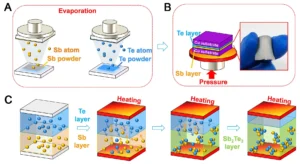In the realm of thermoelectric phenomena, the Peltier effect stands as a testament to the captivating interplay between heat and electricity. Discovered in the 19th century by French physicist Jean Charles Athanase Peltier, this effect elucidates a remarkable phenomenon wherein a temperature difference at the junction of two dissimilar conductors can lead to the generation or absorption of heat. From its humble beginnings to its multifaceted applications in modern technology, the Peltier effect continues to intrigue scientists and engineers alike.
Discovery: Unveiling a Phenomenon
The journey towards the discovery of the Peltier effect began with the pioneering work of Italian physicist Alessandro Volta, who invented the voltaic pile, the precursor to the modern battery, in 1800. Volta’s experiments with electric circuits laid the groundwork for understanding the relationship between electricity and magnetism. Building upon Volta’s legacy, Jean Peltier embarked on a quest to explore the intricate nuances of electrical currents.
In 1834, while investigating the behaviour of electric currents passing through different conductors, Peltier stumbled upon an unexpected revelation. He observed that when an electric current traversed through a circuit consisting of two dissimilar conductors, a temperature difference emerged at the junction between the two materials. Surprisingly, this temperature gradient resulted in the generation or absorption of heat at the junction, depending on the direction of the current flow.
Statement of the Peltier Effect
The Peltier effect can be succinctly stated as follows:
When an electric current passes through the junction of two dissimilar conductors, a temperature difference is produced at the junction. This temperature gradient leads to the absorption or generation of heat, depending on the direction of the current flow and the materials involved.
In a Cu-Fe thermocouple, both junctions A and B are consistently kept at the same temperature. When an electric current is allowed to flow through the thermocouple from a battery, intriguing phenomena unfold. At junction A, where the current flows from copper (Cu) to iron (Fe), heat is absorbed, causing junction A to cool down. Conversely, at junction B, where the current flows from Fe to Cu, heat is released, resulting in junction B becoming hot.
Upon reversing the direction of the current, an intriguing reversal of effects occurs. Now, junction A experiences heating while junction B undergoes cooling. This symmetrical alteration in temperature at the junctions highlights the reversible nature of the Peltier effect.
Therefore, the Peltier effect, as evidenced in the Cu-Fe thermocouple, demonstrates its reversible characteristic, showcasing how the absorption or liberation of heat at the junctions can be controlled by simply changing the direction of the electric current flow.




